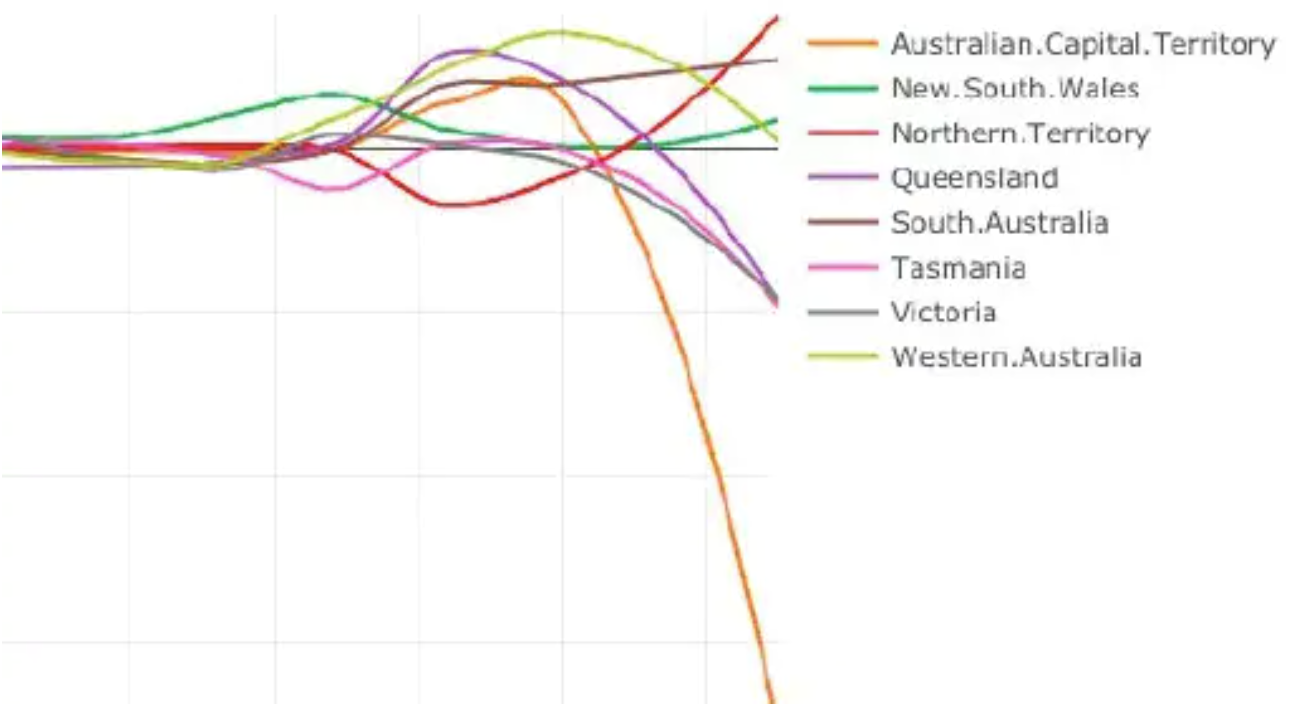
This article is more than
6 year old
New research suggests “flattening the curve” may not be the most effective way to fight the COVID-19 pandemic.
A team of international researchers, led by Peking University Professor Liu Yu, have projected that the “flatten the curve” approach could destroy economies while having not enough of an effect on cutting infections.
“The turning point will never come, the peak value of case numbers will remain the same as if there are no such measures,” the team said in a non-peer-reviewed paper released last week. “We strongly suggest they reconsider.”
WHAT DOES THE RESEARCH SAY?
“Flattening the curve” refers to shutting down non-essential businesses and issuing social distancing measures to ensure that a country’s health system can cope with the number of infections and deaths.
The research, first reported on by the South China Morning Post, looked at daily infections, the geographical spread of the disease, economic output and public transport to assess the effectiveness of social restriction policies on flattening the curve.
They found that only a few countries, including South Korea, Qatar, Norway and New Zealand, have been able to stop the spread with minimum disruption to the economy.
Others, like the United States, Britain, France, Italy and Spain, have suffered major blows to their economies while also struggling with soaring infections and death rates.
They found that China’s “elimination” strategy was most effective at suppressing the virus, but was unsustainable due to its heavy impact on the economy.
In other words, “flattening the curve” produces too little but costs too much.

in that it produces too little for what it costs.Source:Supplied |
The researchers suggested that the disruption to the economy and social life did not align with the reduction in cases.
“This choice still incurs 20-60 per cent loss of economic output, but only achieves a 30-40 per cent reduction in the number of cases, an extent which is insufficient to overturn the epidemic curve,” the researchers said. “Our results show that this is usually the worst scenario in terms of cost-effectiveness.”
But the basis of the research has been questioned. Jaymie Meliker, professor of public health with the Stony Brook University in New York, said the research failed to put a value on each life lost to COVID-19.
“I could not find how much they estimate a life is worth in their cost benefit model,” he told the SCMP.
“If the hospitals are overrun and more people are dying because of that, then we need to quantify that cost for a cost-benefit model.
“That is needed for us to be able to evaluate the pros and cons of the different containment strategies.”
SO DOES THAT MEAN WE SHOULD LIFT THE VIRUS RESTRICTIONS?
In short, no it doesn’t.
Australia’s response to COVID-19 is proof that social distancing measures do work. The latter half of March saw virus cases increase more than ten-fold, from 376 cases on March 16 to over 4500 by the end of that month. Social distancing rules came into effect on March 21, and the case rate has been declining since the beginning of April.
On April 22, Australia recorded just four cases nationally, with several states recording zero new cases.

Picture: Mick Tsikas/AAPSource:AAP |
The researchers acknowledged that simply removing social restrictions, as US President Donald Trump has suggested, would be a dangerous way to go.
They warned relaxing lockdown measures without ramping up infection control capacity could prove disastrous and see countries’ death tolls skyrocket.
The solution, they said, is to only relax lockdowns while rapidly increasing testing and patient isolation.
The good news is that this is similar to Australia’s next move.
Prime Minister Scott Morrison has repeatedly stressed there are three criteria points that need to be met before our social restrictions will be lifted: increased testing, contact tracing and greater ability to respond to local outbreaks.
“If you're going to move to an environment where there are fewer restrictions, then you need these three things in place,” he said at an earlier press conference.
Even so, easing the lockdown will not be considered for a few more weeks.
“National Cabinet agreed that we will use the next four weeks to ensure that we can get these in place.”

Picture: Saeed Khan/AFPSource:AFP |
Australia’s deputy chief medical officer Dr Nick Coatsworth explained that eliminating the virus was not a realistic option.
He told the ABC on Wednesday that Australia was “in a pivotal moment” of the fight against the pandemic, but that we cannot become complacent.
He said social restrictions will need to remain in place “for at least another three weeks to May 11” but “easing restrictions would, by definition, mean some of those numbers (of cases) could change”.
“Businesses and individuals need to prepare, though, that physical distance from one another will need to keep going,” Dr Coatsworth said.
“Great hand hygiene and cough etiquette will need to keep going, because we won’t have a vaccine. So, while some restrictions may be lifted, the way we behave has to stay the same.”
He rejected the notion that Australia could “eliminate” the virus.
“I’m using the word ‘suppression’,” Dr Coatsworth said. “I’ll tell you why I’m doing that. The problem with using words like ‘elimination’ and ‘eradication’ is that we are a non-immune population.
“So, you have to be so sure that you’ve got to that point that you would need to extend your restrictions for so long to get to that point, that I think that that would lead to Australians having to be under social restrictions for too long to get there. That’s an honest view.
“If, in the process of suppressing, we get to the point of eradication, then that would be a magnificent outcome. But we must continue to build capacity and we must continue to contain the virus, and remember that we’re not immune from it. So, the word that — the strategy that we’re using — is to ‘suppress’ COVID-19 until there’s a vaccine.”